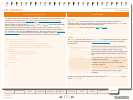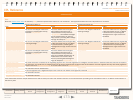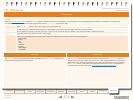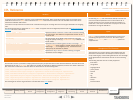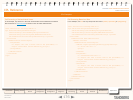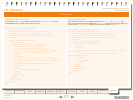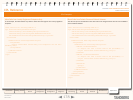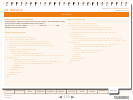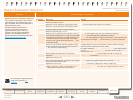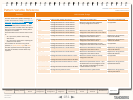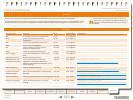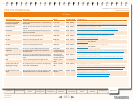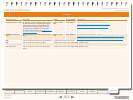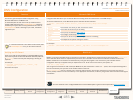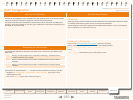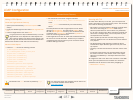
180
D14049.03
MAY 2008
Grey Headline (continued)
TANDBERG VIDEO COMMUNICATIONS SERVER
ADMINISTRATOR GUIDE
Introduction Getting Started
Overview and
Status
System
Conguration
VCS
Conguration
Zones and
Neighbors
Call
Processing
Bandwidth
Control
Firewall
Traversal
Maintenance Appendices
Regular Expression Reference
Regular expressions can be used in conjunction
with a number of VCS features such as alias
transformations, zone transformations, CPL
policy and ENUM. The VCS uses POSIX format
regular expression syntax.
The table opposite provides a list of
commonly used special characters in
regular expression syntax. This is only
a subset of the full range of expressions
available. For a detailed description of
regular expression syntax see the publication
Mastering Regular Expressions [9].
Character Description Example
.
Matches any single character.
*
Matches 0 or more repetitions of the previous match. .* will match against any sequence of characters.
+
Matches 1 or more repetitions of the previous match.
\
Escapes a regular expression special character.
\d
Matches any decimal digit, i.e. 0-9.
[...]
Matches a set of characters. Each character in the set
can be specied individually, or a range can be specied
by giving the rst character in the range followed by the
- character and then the last character in the range.
You can not use special characters within the [] - they
will be taken literally.
[a-z] will match against any lower case alphabetical character.
[a-zA-Z] will match against any alphabetical character.
[0-9#*] will match against any single E.164 character - the E.164 character
set is made up of the digits 0-9 plus the hash key (#) and the asterisk key
(*).
(...)
Groups a set of matching characters together. Groups
can then be referenced in order using the characters \1,
\2, etc. as part of a replace string.
A regular expression can be constructed to transform a URI containing a
user’s full name to a URI based on their initials.
The regular expression (.).* _ (.).*(@ ex a m ple.c o m) would match against
the user john _ smith@example.com and with a replace string of \1\2\3
would transform it to js@example.com.
|
Matches against one expression or an alternate
expression.
.*@example.(net|com) will match against any URI for the domain
example.com or the domain example.net.
^
Signies the start of a line.
When used immediately after an opening brace, negates
the character set inside the brace.
[^abc] matches any single character that is NOT one of a, b or c.
$
Signies the end of a line. ^\d\d\d$ will match any string that is exactly 3 digits long.
(?!...)
Negative lookahead. Denes a subexpression that must
not be present in order for there to be a match.
(?!.*@tand berg.net$).* will match any string that does not end with @
tandberg.net.
For an example of regular expression
usage, see the section CPL
Examples.
Overview Common Regular Expressions



